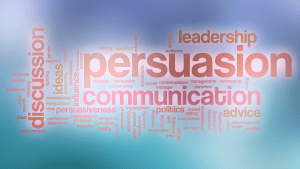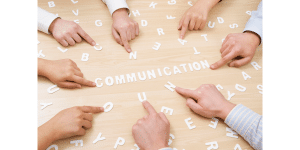In today’s fast-paced world, effective communication is the cornerstone of success, both professionally and personally. However, our verbal exchanges are often riddled with detrimental habits that can undermine our message and create a negative impression. Transform Your Communication: Identifying and Overcoming Harmful Speech Habits is your definitive guide to recognizing and conquering these linguistic pitfalls. Our expert advice will empower you to express yourself more clearly, confidently, and persuasively, paving the way for stronger connections and fruitful collaborations. Say goodbye to filler words, overused clichés, and ambiguous statements, and welcome a new era of impactful communication that will leave a lasting impression on your audience. Get ready to harness the power of language and elevate your communication skills to unprecedented heights.
The impact of harmful speech habits on communication
Our ability to communicate effectively is essential in today’s fast-paced world, where we are constantly interacting with others, both professionally and personally. Our verbal exchanges, however, can be marred by harmful speech habits that not only undermine our message but also create a negative impression on our audience. In this article, we will explore the impact of these harmful habits on communication and provide actionable strategies to help you overcome them.
Harmful speech habits can manifest in various forms, such as filler words, clichés, and ambiguous statements. These verbal crutches can detract from the clarity and effectiveness of our message, as well as our credibility as a communicator. They can also create misunderstandings and misinterpretations, leading to confusion and frustration on the part of the listener. Furthermore, harmful speech habits can make us appear less confident and knowledgeable than we actually are, which can adversely affect our professional and personal relationships.
Conversely, clear and concise communication can strengthen connections and foster collaboration, enabling us to achieve our goals more efficiently and effectively. By identifying and addressing our harmful speech habits, we can enhance our communication skills and create a more positive and lasting impression on our audience. With that in mind, let’s delve into how we can identify our own harmful speech habits and work towards overcoming them.
Identifying your own harmful speech habits
In order to overcome harmful speech habits, we must first become aware of their presence in our communication. To do this, we can engage in self-reflection and self-monitoring, as well as seek feedback from others. Here are some steps to help you identify your own harmful speech habits:
- Record yourself: One of the most effective ways to detect your own speech habits is to record yourself during conversations or presentations. By listening to the recording, you can identify patterns and tendencies in your speech that may be detrimental to your communication.
- Analyze your speech: As you listen to the recording, take note of any filler words, clichés, or ambiguous phrases that you use. Additionally, pay attention to your tone, pace, and volume, as these factors can also influence the effectiveness of your communication.
- Seek feedback: Ask for feedback from friends, family, or colleagues regarding your communication style. They may be able to provide insights into your speech habits that you may not have noticed on your own.
- Reflect on your communication goals: Consider the purpose of your communication and the message you want to convey. Are your speech habits helping or hindering you in achieving these goals?
Common harmful speech habits and their effects
Now that we have discussed how to identify harmful speech habits, let’s examine some common examples and their effects on communication. By understanding these habits and their impact, we can better address and overcome them in our own speech.
- Filler words: Words such as “um,” “uh,” “like,” and “you know” are often used unconsciously to fill gaps in our speech. While they may seem harmless, they can make us appear less confident and knowledgeable, as well as detract from the clarity of our message.
- Overused clichés: Relying on clichés can make our communication sound unoriginal and uninspired. This can result in a lack of engagement from our audience and diminish the impact of our message.
- Ambiguous statements: Vague or unclear statements can lead to confusion and misunderstandings, causing frustration for both the speaker and the listener. Clear and concise communication is crucial for effective collaboration and problem-solving.
- Overuse of jargon: While industry-specific terminology can be useful in certain contexts, excessive use of jargon can alienate and confuse those who are not familiar with it. This can hinder effective communication and collaboration.
- Speaking too quickly: Rapid speech can make it difficult for listeners to absorb and process the information being conveyed. This can lead to misunderstandings and a lack of comprehension on the part of the listener.
Strategies for overcoming harmful speech habits
Armed with the knowledge of common harmful speech habits and their effects, we can now explore various strategies to help you overcome these linguistic pitfalls. By implementing these techniques, you can work towards clearer, more confident, and persuasive communication:
- Practice deliberate pauses: Instead of using filler words, try incorporating deliberate pauses into your speech. This can help you collect your thoughts, reduce the use of filler words, and create a more polished and confident speaking style.
- Expand your vocabulary: By broadening your vocabulary, you can replace clichés and overused phrases with more original and engaging language that better conveys your message.
- Be specific and concise: Aim to express your thoughts clearly and succinctly, avoiding vague or ambiguous language. This can help prevent confusion and misunderstandings, as well as create a more compelling message.
- Limit jargon: Be mindful of your audience’s familiarity with industry-specific terminology and limit your use of jargon accordingly. This can help ensure that your message is accessible and understandable to a wider range of listeners.
- Adjust your pace: Practice speaking at a measured pace, allowing your audience time to absorb and process the information you are conveying. This can improve comprehension and facilitate more effective communication.
The role of active listening in effective communication
While much of our focus in this article has been on verbal expression, it is important to recognize that effective communication also involves active listening. Being an attentive and engaged listener is crucial for fostering strong connections and successful collaborations.
Active listening involves not only hearing the words being spoken but also understanding and interpreting the underlying message. This requires paying close attention to the speaker, as well as demonstrating empathy and respect. By practicing active listening, we can better understand others’ perspectives and needs, which can lead to more productive and harmonious interactions.
To improve your active listening skills, consider the following tips:
- Maintain eye contact: Making and maintaining eye contact with the speaker can demonstrate your attentiveness and interest in what they are saying.
- Minimize distractions: Eliminate any distractions, such as electronic devices or background noise, that may hinder your ability to focus on the speaker.
- Ask open-ended questions: Encourage the speaker to elaborate on their thoughts and feelings by asking open-ended questions that require more than a simple yes or no response.
- Paraphrase and summarize: Periodically paraphrase or summarize what the speaker has said to confirm your understanding and show that you are actively engaged in the conversation.
Building self-awareness and mindfulness in communication
Developing self-awareness and mindfulness in communication is essential for identifying and overcoming harmful speech habits. By cultivating a greater understanding of our own communication patterns and tendencies, we can make more conscious and deliberate choices in our verbal exchanges.
Practicing mindfulness involves being present and fully engaged in the moment, as well as being aware of our thoughts, feelings, and actions. By incorporating mindfulness techniques into our communication, we can become more attuned to our speech habits and make adjustments as needed. This can lead to more effective and impactful communication.
To build self-awareness and mindfulness in communication, consider the following strategies:
- Reflect on your communication style: Regularly assess your strengths and weaknesses as a communicator, and identify areas for improvement.
- Set communication goals: Establish specific goals for your communication, such as reducing filler words or improving your active listening skills.
- Practice mindful breathing: Engage in deep, focused breathing exercises to help calm your mind and increase your self-awareness during conversations.
- Monitor your speech habits: Continuously assess your speech habits during conversations and presentations, making adjustments as needed to improve your communication.
Practicing assertive communication techniques
Another important aspect of effective communication is assertiveness. Assertive communication involves expressing your thoughts, feelings, and needs in a direct, honest, and respectful manner. By practicing assertive communication techniques, we can convey our message more effectively and avoid potential misunderstandings.
Assertive communication differs from passive or aggressive communication styles, which can lead to unproductive interactions and strained relationships. Passive communication involves suppressing our thoughts and feelings, while aggressive communication involves expressing them in a confrontational or dominating manner. Assertive communication strikes a balance between the two, allowing us to express ourselves with confidence and clarity, while also being respectful of others’ perspectives and needs.
To practice assertive communication techniques, consider the following tips:
- Use “I” statements: Express your thoughts and feelings using “I” statements, which can help create a more open and non-confrontational tone.
- Be clear and concise: Clearly articulate your message, avoiding vague or ambiguous language that may lead to confusion or misinterpretation.
- Practice active listening: Demonstrate empathy and understanding by actively listening to the other person’s perspective and needs.
- Maintain a calm and respectful tone: Speak in a calm and respectful tone, even when discussing difficult or contentious issues.
The benefits of improved communication skills
By addressing and overcoming harmful speech habits, as well as practicing active listening, mindfulness, and assertive communication techniques, we can experience numerous benefits in both our professional and personal lives. Improved communication skills can lead to stronger connections, more productivecollaborations, and greater success in achieving our goals. Here are some specific benefits of improved communication:
- Enhanced productivity: Clear and effective communication can help streamline workflows and reduce misunderstandings, leading to increased productivity and efficiency.
- Improved relationships: Strong communication skills can foster positive and supportive relationships, both professionally and personally.
- Increased credibility: By eliminating harmful speech habits, we can enhance our credibility as a communicator, instilling confidence in our audience.
- Greater career advancement: Effective communication is a key factor in career success, as it enables us to share our ideas and achievements with others, as well as build strong professional networks.
- Better problem-solving: Clear and concise communication can facilitate more effective problem-solving, enabling us to identify and address issues more efficiently.
Conclusion and next steps for transforming your communication
In conclusion, identifying and overcoming harmful speech habits is essential for effective communication. By becoming more self-aware, practicing mindfulness, and implementing assertive communication techniques, we can transform our communication skills and achieve greater success in our personal and professional lives. Remember to focus on clear and concise language, active listening, and respectful communication, and you will see positive results in no time.
To continue your journey towards improved communication, consider the following next steps:
- Practice, practice, practice: Implement the strategies outlined in this article and practice them in your daily conversations and presentations.
- Seek feedback: Ask for feedback from others on your communication style and incorporate their insights into your practice.
- Attend workshops or training sessions: Consider attending workshops or training sessions on effective communication to further enhance your skills.
- Read books or articles on communication: There are many resources available on effective communication, so take advantage of them to continue learning and improving.
Remember that effective communication is a lifelong journey, and it takes time and effort to transform our speech habits. But with persistence and dedication, you can become a more confident, persuasive, and impactful communicator.











